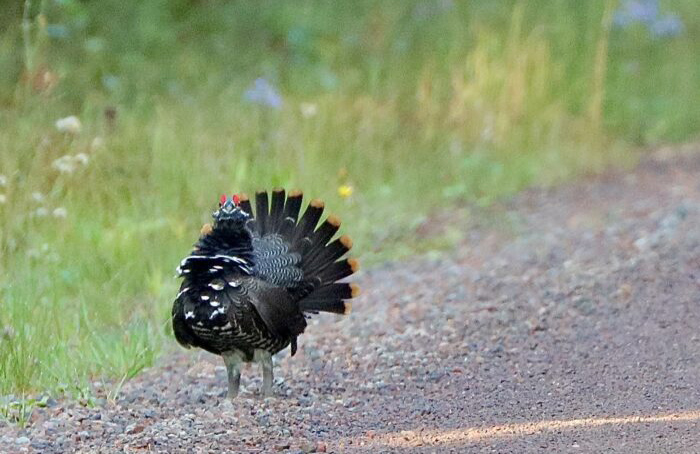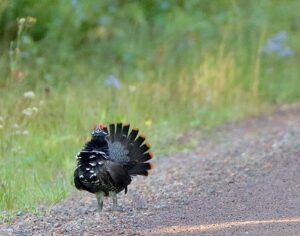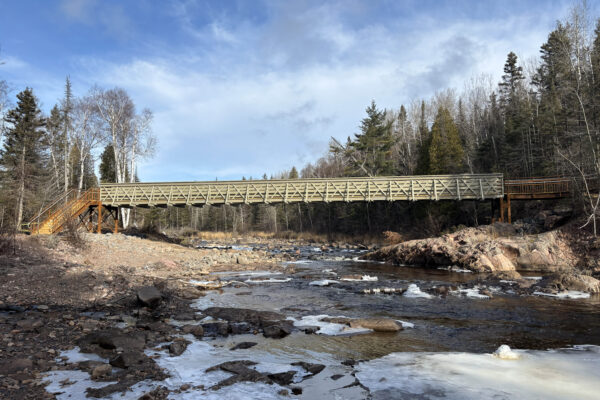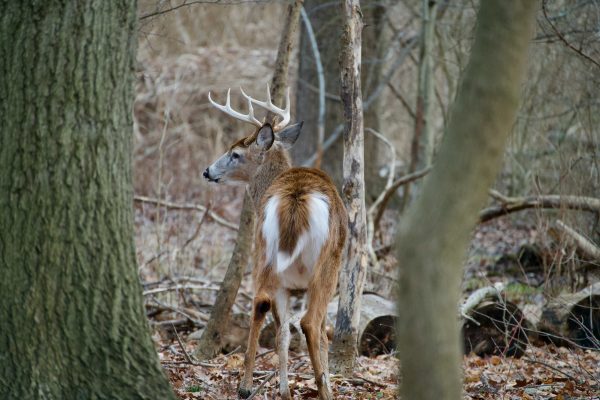DNR sets spruce grouse limits for 2025 hunting season
The ruffed grouse and spruce grouse hunting season begins on Sept. 13, and the Minnesota Department of Natural Resources has implemented new regulations for daily limits and possession limits for the 2025 season.
It’s the first time the Minnesota DNR has changed daily and possession limits for ruffed or spruce grouse since the late 1970s.
“Going back to 1977, we haven’t changed our ruffed grouse or spruce grouse bag limits,” said Nate Huck, the migratory gamebird specialist with the Minnesota DNR.
Since the late 1970s, the daily limit for ruffed and spruce grouse has been five, and the possession limit has been 10. Hunters were able to harvest any combination of ruffed and spruce grouse as long as they did not exceed the total daily limit or possession limit.
For the 2025 season, new restrictions will limit the number of spruce grouse that hunters are allowed to harvest.
The new regulations set a maximum daily number of spruce grouse at two and the maximum possession limit of four spruce grouse. The total daily limit remains at 5, and the total possession limit remains at 10. This means that hunters will only be able to harvest two spruce grouse per day and up to three ruffed grouse.
Huck said the new regulations, which were discussed in detail by a DNR review committee, are a result of several factors.
“There’s a lot that went into this decision,” Huck said.
The differences in behavior of the spruce grouse, shifting habitats, smaller population numbers, and the expanded use of ATVs and UTVs to access spruce grouse habitat all contributed to the regulation change, Huck said.
Spruce grouse live primarily in the coniferous forests of northern Minnesota and have a less expansive range than the ruffed grouse, which lives more in deciduous forests across a larger swath of the state. Given the habitat differences, the spruce grouse population numbers are smaller than those of ruffed grouse.
Huck said that spruce grouse are known to spend more time on gravel roads eating small pebbles to aid digestion, and are also less wary of humans than their small game counterpart, the ruffed grouse.
“We have some research that suggests that spruce grouse kind of congregate on the roadways early in the year to find grit, and so hunters can more easily target them,” Huck said.
The DNR has also observed an increase in hunters using ATVs and UTVs to pursue grouse in recent years, which allows hunters to hunt larger areas of spruce grouse habitat daily.
“All of those things factoring in, we made the decision to have that bag limit to be a little more reflective of what we feel the population status is in Minnesota,” Huck said.
While the DNR reviewed regulation changes for spruce grouse limits in 2025, consideration was also given to adjusting ruffed grouse limits. However, Huck said that since ruffed grouse have a broader range and larger population, no changes are needed at this time.
For other species, such as woodcock, which inhabit Minnesota’s northern regions, there have been no changes to the daily or possession limits for the upcoming 2025 season.
The long-billed woodland bird is one of Minnesota’s smallest game birds and is typically found near wooded areas and wetlands. The woodcock hunting season has a shorter season, beginning Sept. 20 and running through Nov. 3. Huck said the DNR recently completed the woodcock population survey data, which showed that population numbers are doing well.
“Woodcock appear to be doing pretty well,” Huck said. “We continue to monitor them through each and every year through our singing ground surveys.”
WTIP’s Kalli Hawkins spoke with Nate Huck, the migratory gamebird specialist with the Minnesota DNR, about the change to spruce grouse regulations for the upcoming 2025 hunting season. The audio from the interview is below.















